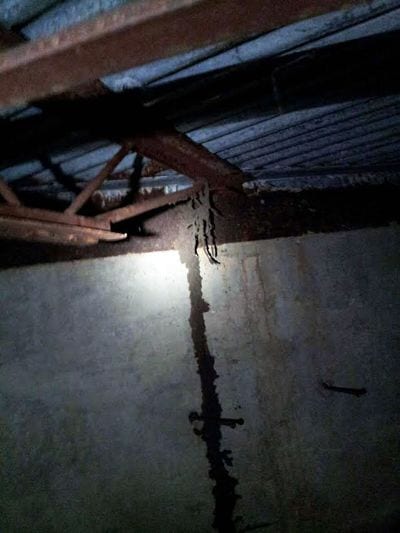Subterranean.jpg?width=263&name=istock_sh_termite_sm__12-col%20(1).jpg) Termites are small insects, infamous for eating through wooden structures. There are different types of termites, broadly defined by their habitats- subterranean, dry wood, and damp wood. Subterranean termites live underground in large colonies. However, they often move above the ground surface through mud tubes. These mud tubes are made of soil, wood and termite saliva.
Termites are small insects, infamous for eating through wooden structures. There are different types of termites, broadly defined by their habitats- subterranean, dry wood, and damp wood. Subterranean termites live underground in large colonies. However, they often move above the ground surface through mud tubes. These mud tubes are made of soil, wood and termite saliva.
Wood that is in contact with the earth is vulnerable to subterranean termite infestation. The termites create mud tubes through timber and use them to reach their food sources. However, these termites can also create shelter tubes between cracks on concrete walls and foundations. Whichever the case, the presence of termite shelter tubes is a concerning sight.
Why do termites build shelter tubes?
Besides helping the termites reach their food source, shelter tubes also provide protection. Subterranean termites also need moisture to survive. The termite mud tubes protect the termites from dehydration and predators.
There are different types of shelter tubes- exploratory, working, swarm, and drop tubes. If you find these tubes they may be empty. However, it doesn’t mean that the termites are gone. They could be in a different section of your house.
- Exploratory tubes
These tubes are thin and extremely fragile. Termites use these tunnels to look for food sources. They can rise through the soil without connecting to any wood. Termites can build exploratory tubes up to 15 feet above the ground on concrete and metal surfaces.
- Working tubes
Working tubes facilitate the movement of food within the colony. The tubes measure a quarter to one inch. They are loosely arranged, almost like a highway. You can find utility tubes in your basement, on your foundation, window frames, and around window sills.
- Swarm Tubes
Termites are organized insects, and during chaotic flying seasons, they construct swarm tubes to create more accommodation. When it’s time for swarmer termites to fly away from their colony, there is chaos inside the tunnels. Swarm tubes are delicate, which allows the swarmers to fly out.
- Drop Tubes
If you find a termite shelter tube dropping from your ceiling to the ground, don’t be surprised. Termites are capable of creating stalagmite-like structures. The tubes are light and serve as connections for food.
What to do when you find termite shelter tubes
Mud tubes are physical evidence of a termite infestation in your home. The infestation may have existed for months before the termites created the tubes. If you find mud tubes, call SafeHaven Pest Control for termite control and inspection services.




